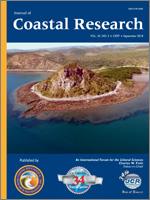Llopis, I.A.; Echeverria, A.G.; Trimble, S.; Brannstrom, C., and Houser, C., 2018. Determining beach user knowledge of rip currents in Costa Rica.
Rip currents account for over 50 drownings a year in Costa Rica, with most drownings involving young single male students at beaches in close proximity to San Jose. The hazard posed by a rip current in Costa Rica and elsewhere depends in part on beach user knowledge of the rip current hazard and their ability to identify the situations in which there is the potential for drowning or need for rescue. This study describes the results of beach user surveys (n = 171) completed in English and Spanish at Jacó Beach on the central Pacific coast and Cocles Beach on the Caribbean coast of Costa Rica in 2013 and 2014. Rip current knowledge amongst national (domestic) and foreign tourists was estimated on both beaches. Results suggest that the amount of time spent in the water, activities on the beach, and self-assessment of swimming abilities help to explain why more males drown despite similar populations of males and females at both beaches. The personal and group behaviors that increase the potential for drowning are exacerbated by problems with the rip current warning system used at each beach. Approximately 58% of respondents did not observe the warnings, and 41% self-reported not changing their behavior after observing the sign, with 40% of respondents noting that the messages on the signs were confusing. Results of the study highlight the need to design and employ more effective warning signs, to set up a national certified lifeguard corps, and to plan educational activities aimed at those who are at greatest risk to drowning. This assessment and the identified need to develop a national policy can serve as a model for other countries in Central America and elsewhere where rip current–related drownings are a public health concern.





